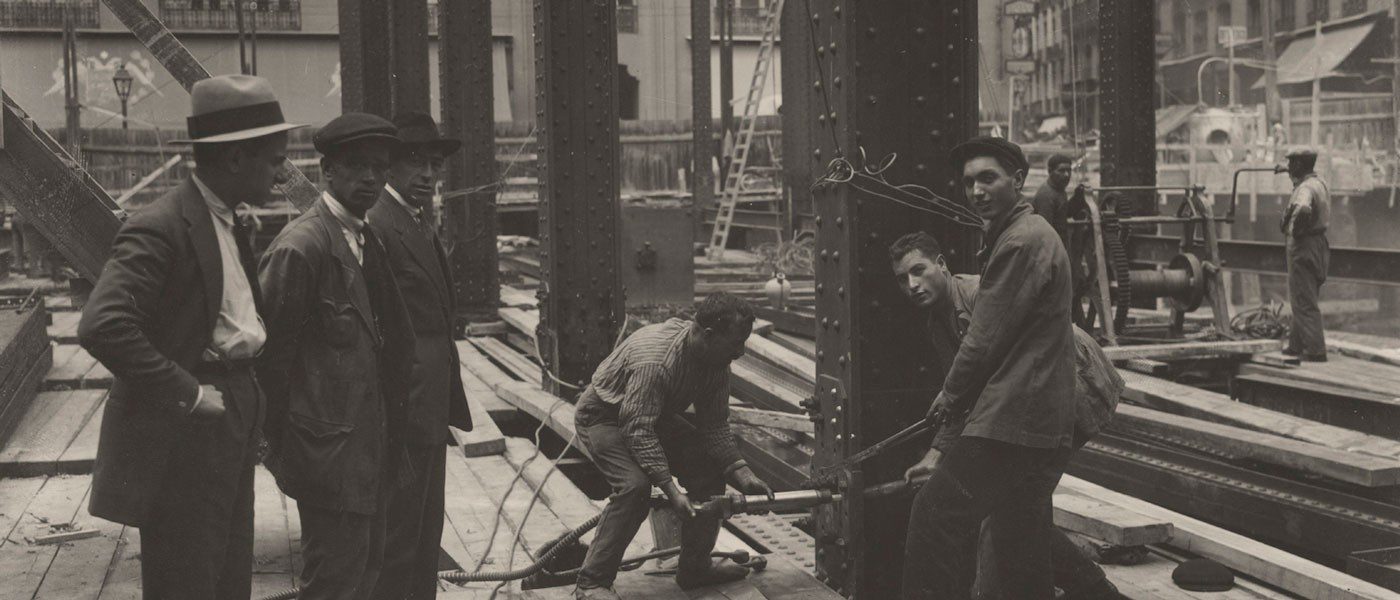
Work on the Telefónica Building on Gran Via was deemed to be completed on 1 January 1930. The project was run by Luis Ignacio de Cárdenas, Telefónica’s architect, who finished it in a period of three years, inspired by the parameters of the huge North American skyscrapers and the premises of International Telephone and Telegraph (ITT), the US corporation involved in the creation of the Telefónica Company in 1924.
Sat, Sun and Hollidays : 11:00 - 20:00
Work on the Telefónica Building on Gran Via was deemed to be completed on 1 January 1930. The project was run by Luis Ignacio de Cárdenas, Telefónica’s architect, who finished it in a period of three years, inspired by the parameters of the huge North American skyscrapers and the premises of International Telephone and Telegraph (ITT), the US corporation involved in the creation of the Telefónica Company in 1924.
From this building, before it was even completed, King Alfonso XIII made the first transoceanic telephone call, conversing in 1928 with the President of the United States, Calvin Coolidge, who was at Washington’s Chamber of Commerce.
It became one of Madrid’s most celebrated buildings and an object of pride for the local population. At more than 90 metres high, it has become a permanent feature of the Madrid skyline. Recognized as the first skyscraper in Europe and the tallest building on the entire continent at that time, its New York ‘look’ helped to give Madrid a modern and cosmopolitan feel that has endured to the present day.
In 1930 it accommodated some 1,800 employees, the bulk of whom were made up of the telephone operators, who covered peak periods in shifts of up to 150 young ladies, as well as supervisors and other telephone connection services. At that time, when there were few women in the workplace, they helped to give a modern image to the company, not to mention the urban landscape of the Gran Vía Avenue and the whole of Madrid.
An important chapter in the history of the building occurred during the Spanish Civil War. At the start of the siege of Madrid, Telefónica was a priority objective as much for its height as its proximity to the front line, as well as being the nation’s most important communications centre. Its basements were used as air raid shelters and the building was hit by numerous bombs and shells.
Gran Vía building seen from Calle Alcalá
The government installed the press censorship office in the building, with the journalist and writer Arturo Barea in charge. All international connections were made from here and foreign correspondents used to transmit their copy around the world. From here, writers such as John Dos Passos, Ernest Hemingway and the author of The Little Prince, Antoine De Saint-Exupéry, all broadcast their reports.
The building underwent a number of modifications over the years: an extension in the mid-1950s, as well as subsequent remodelling, the last undertaken in 2012, with the opening of Espacio Fundación Telefónica (Telefónica Foundation Space). At more than 80 years old, this visitor from New York which settled on Madrid’s Gran Via has managed to adapt to different uses and serve as a bridge between the past and the future, while acting as an icon for the city of Madrid and a symbol of stability and modernity.
Landmarks
1927: Construction begins on the Telefónica Building on Gran Vía
1928: King Alfonso XIII makes the first transoceanic call to the President of the United States
1 January 1930: Construction work is completed on the Telefónica Building on Gran Vía
1936: The building becomes a priority target during the Spanish Civil War. The Press Censorship Office would be based here.



